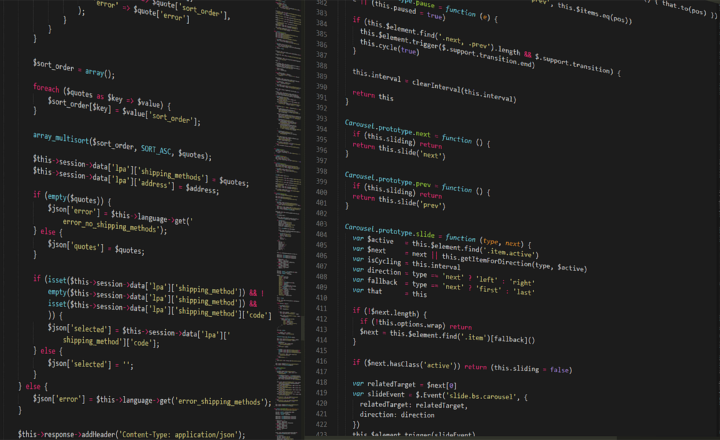The Most Intriguing Codes and Ciphers Ever Used in Espionage
November 17, 2024

Espionage has always been a vital component of global conflict, politics, and negotiations. Throughout history, nations have used codes and ciphers to safeguard sensitive information, divert attention from strategic intentions, and mislead adversaries. In this article, we will explore some of the most intriguing codes and ciphers that have shaped espionage and shaped history.
1. The Caesar Cipher: A Simple Shift
Developed during the Roman Empire, the Caesar cipher is one of the oldest and most straightforward encryption techniques. Named after Julius Caesar, who famously used it to communicate with his generals, this method involves shifting the letters of the alphabet by a fixed number. For instance, with a shift of three, “A” becomes “D,” “B” becomes “E,” and so on.
Despite its simplicity, the Caesar cipher was a significant advancement for its time, allowing rapid and secure communication. However, it’s also vulnerable to frequency analysis, where the most commonly used letters are identified, allowing codebreakers to decipher the message.
2. The Enigma Machine: A Revolutionary Wonder
The Enigma Machine was a complex cipher device used by the German military during World War II. This electromechanical device allowed users to encrypt their messages through a combination of rotating wheels, making it exceedingly difficult for enemies to crack.
The Enigma’s real strength lay in its use of interchangeable rotors and plugboards, which changed the encryption settings continuously. Thousands of unique settings meant that cracking the code was an incredibly labor-intensive process. The efforts of mathematician Alan Turing and his team at Bletchley Park eventually led to breakthroughs in deciphering Enigma-encoded messages, significantly impacting the outcome of the war.
3. The One-Time Pad: Unbreakable Encryption
The one-time pad (OTP) is regarded as the only truly unbreakable cipher when implemented correctly. Its concept is simple: a message is combined with a random key that is as long as the message itself. The key is used only once, and then discarded.
When using an OTP, if the key is genuinely random, kept secret, and never reused, the resulting ciphertext provides no information about the original message. However, the practicality of the OTP is limited by the challenges in securely distributing and storing the keys. This method was famously utilized by intelligence services during the Cold War, including the KGB.
4. The Vigenère Cipher: An Elegant Solution
The Vigenère cipher, developed in the 16th century, is a method of encrypting alphabetic text by using a simple form of polyalphabetic substitution. It employs a keyword that dictates the shift of each letter based on its corresponding position in the keyword. For instance, if the keyword is “KEY,” the first letter of the plaintext would be shifted according to the first letter of “KEY,” which is “K.”
This method improved upon systems like the Caesar cipher by varying the shift for each letter, making it much harder to decipher. While the Vigenère cipher was widely considered secure for centuries, it was ultimately cracked in the 19th century, showcasing the ongoing battle between codemakers and codebreakers.
5. The Zimmermann Telegram: A Catalyst for War
In 1917, during World War I, Germany sent the Zimmermann Telegram to Mexico, proposing a military alliance against the United States. However, the British intelligence intercepted and decrypted the message, revealing Germany’s intentions.
The telegram used a complex cipher developed by the Germans, which initially confounded British cryptanalysts. However, with ingenuity and collaboration between various intelligence units, they cracked the code and made the message public. The release of the telegram stirred public sentiment against Germany in the U.S., significantly contributing to America’s entry into the war.
6. The Navajo Code Talkers: A Unique Solution
During World War II, the U.S. Marines employed Navajo soldiers to create an unbreakable code based on the Navajo language. The code talkers devised a set of keyed terms and used metaphors from Navajo culture to translate military terms. For example, the word for “tortoise” was used to signify “tank.”
Due to the complexity of the Navajo language and the limited number of speakers, this code proved immensely effective in communication on the battlefield. The Axis forces were never able to crack the Navajo code, demonstrating the power of language as a tool for national security.
7. The Playfair Cipher: A Victorian Innovation
Developed in the mid-19th century, the Playfair cipher provides a significant enhancement over earlier ciphers by encrypting digraphs (pairs of letters) instead of individual letters. A 5×5 grid is filled with a keyword, omitting duplicates and combining the letters I/J into a single cell. To encrypt a message, the letters are paired, then transformed based on their positions in the grid.
While not impervious to attacks, the Playfair cipher’s encryption was complex enough to thwart many attempts to decipher the encrypted messages at that time. It gained widespread use among military personnel and secret societies.
8. Modern Cryptography: A New Era
Today, cryptography has evolved beyond classical methods into sophisticated algorithms used for securing sensitive information across the internet. The advent of public key infrastructure (PKI), advanced encryption standard (AES), and RSA encryption are prime examples of modern cryptography that make espionage much more complex and secure.
Modern cryptography integrates mathematical theories and computer science to create systems that can protect vast amounts of data from unauthorized access. Intelligence agencies now employ cutting-edge cryptography methods to safeguard national security, making espionage more intricate than ever before.
Conclusion
The world of espionage is fascinating and complex, intricately woven into the fabric of history. From the simplistic Caesar cipher to modern cryptographic techniques, the evolution of codes and ciphers highlights an ongoing battle between secrecy and uncovering the truth. As technology continues to advance, the implications of espionage will remain crucial to national security, personal privacy, and global diplomacy. Understanding the codes used throughout history not only educates us about our past but also prepares us for the challenges of the future in safeguarding information.
Despite advances in encryption, the fundamental principles of espionage remain unchanged – the desire to protect one’s own interests, gather intelligence, and ultimately shape the course of history through secrecy and subterfuge.








